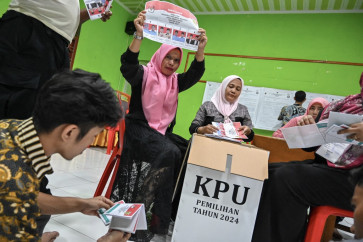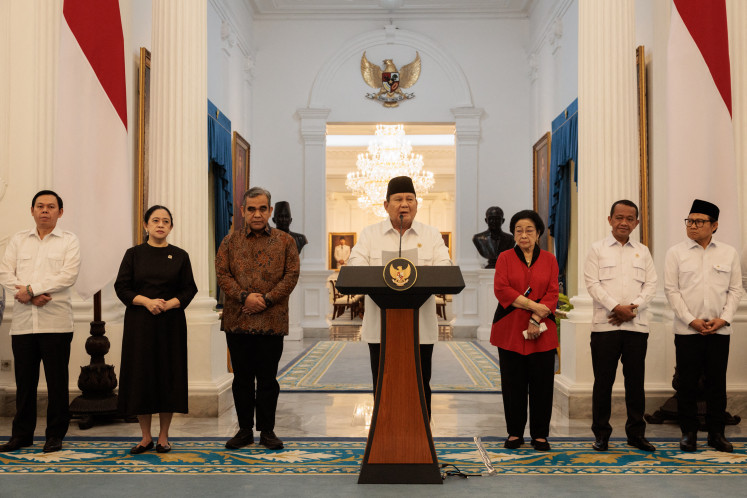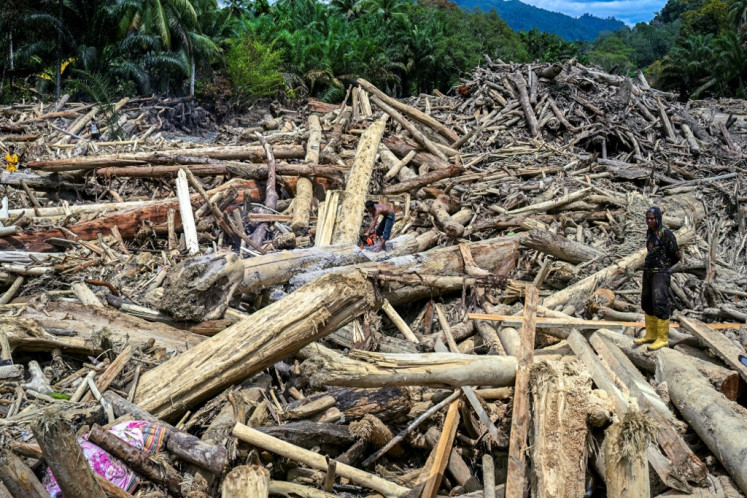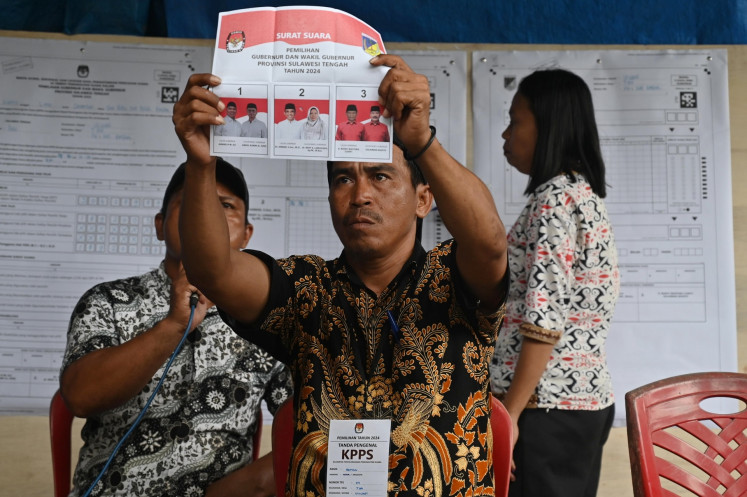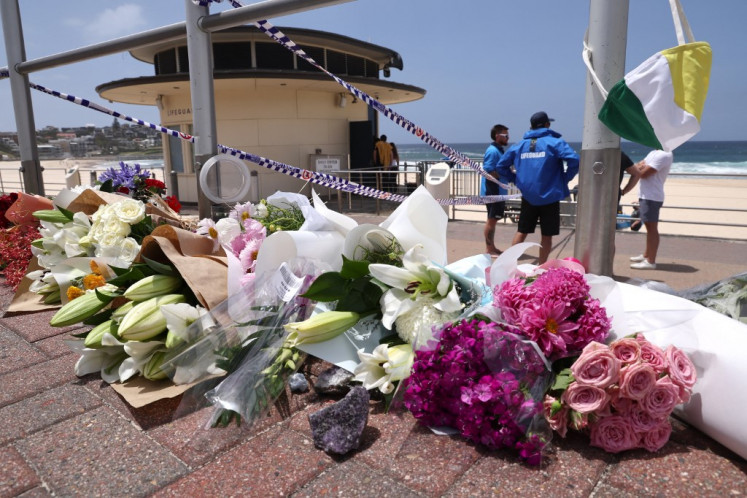Popular Reads
Top Results
Can't find what you're looking for?
View all search resultsPopular Reads
Top Results
Can't find what you're looking for?
View all search resultsA paradise lost
Environmental activists argue the rapid and often unregulated conversion of agricultural land into buildings is a primary cause of increased flood risk.
Change text size
Gift Premium Articles
to Anyone
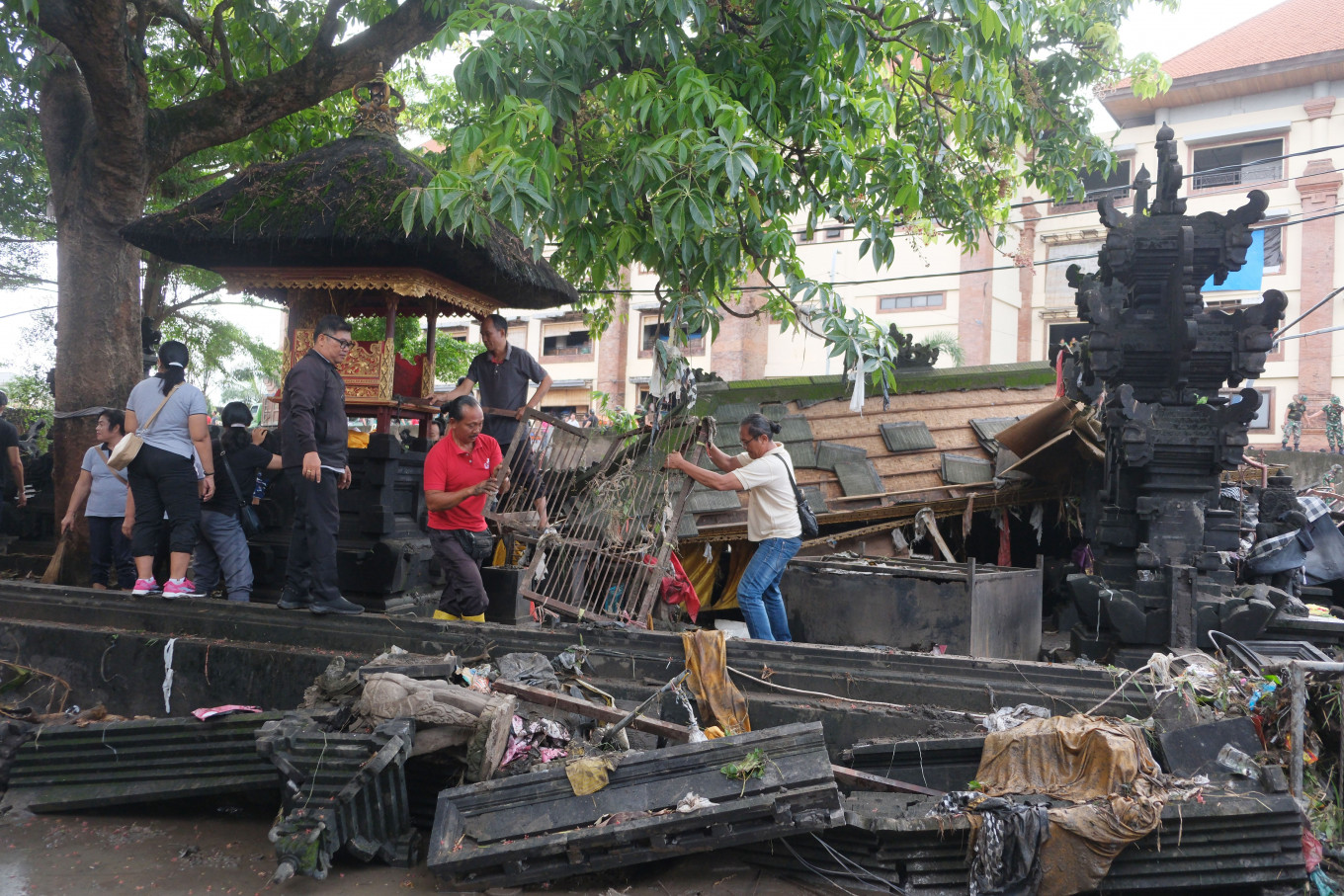 Aftermath: Residents check on a temple damaged by flooding on Sept. 11, 2025, at Kumbasari market in Denpasar, Bali. The Bali Disaster Management Agency (BPBD) recorded more than 120 areas hit by the flooding in seven regencies and cities in Bali. The floods left at least 14 people dead and two missing. (Antara/Nyoman Hendra Wibowo)
Aftermath: Residents check on a temple damaged by flooding on Sept. 11, 2025, at Kumbasari market in Denpasar, Bali. The Bali Disaster Management Agency (BPBD) recorded more than 120 areas hit by the flooding in seven regencies and cities in Bali. The floods left at least 14 people dead and two missing. (Antara/Nyoman Hendra Wibowo)
L
ast week, our attention was drawn to Bali, but not for its natural beauty. The resort island’s streets were paralyzed, buildings were submerged in mud and tourists were evacuated as floods swept through Denpasar and six of its eight regencies, including major tourist hubs Gianyar, Tabanan and Badung.
The torrential rains and subsequent floods claimed 17 lives and caused an estimated Rp 28.9 billion (US$1.7 million) in economic losses from damaged buildings and public facilities, according to the Bali Disaster Mitigation Agency.
Famous for its beaches and green rice fields, Bali has undergone rapid changes over the past two decades. Tourist hubs have proliferated in the island’s south, from the surf and entertainment centers of Kuta and Canggu to the hills of Ubud. This unchecked development has created serious problems.
Roads to Canggu are now infamous for afternoon gridlock, and a new road was carved through a cliff in southwestern Badung to accommodate tourist buses. Ubud’s tranquil atmosphere, once defined by lush rice fields, is now overshadowed by a boom in villas and restaurants.
Environmental activists argue that the rapid and often unregulated conversion of farmland into buildings is a primary cause of increased flood risk. Paving over these lands reduces their natural ability to absorb water, worsening the impact of heavy rain.
Data from the Indonesian Forum for the Environment (Walhi) from 2018 to 2023 show that land conversion rates in Tabanan, Badung, Gianyar and Denpasar ranged between 3 and 6 percent each year.
Bali also has a long-standing waste management problem. Large amounts of garbage end up in rivers and drains. During heavy rains, debris clogs waterways and sewer systems, preventing water from draining and causing flash floods to spread more quickly.
Initially, Bali Governor I Wayan Koster dismissed the idea that land conversion was a major factor in the flooding. Days later, under public and central government pressure, he announced a ban on new hotels, restaurants and commercial facilities on productive land, particularly rice fields, starting this year.
The issue of overtourism and overdevelopment has been a growing concern. Since the island reopened after the pandemic, foreign arrivals in Bali have surged. According to Statistics Indonesia (BPS), 5.2 million foreign visitors came to the island from January to October last year, accounting for 45 percent of Indonesia’s total foreign arrivals for that period.
Social media and travel forums have since been filled with complaints about overcrowding, traffic congestion and mounting waste. These problems not only heighten the risk of environmental degradation and flooding but also threaten the island’s culture and could eventually deter tourists.
Last year, the Bali administration proposed a moratorium on new hotels and nightclubs in Badung, Denpasar, Gianyar and Tabanan after a viral video showed a hotel being built into a limestone cliff, sparking fears of environmental damage. The plan, however, never materialized. Authorities failed to learn from recurring floods in Kuta and Seminyak, where the Mati River regularly overflowed into areas once rice fields but now dotted with hotels and villas.
This time, Bali’s leadership must take development control seriously. While a moratorium is a good temporary measure, authorities also need permanent solutions, such as improving drainage, restoring rivers and watersheds and devising long-term flood control strategies.
Tourists come to Bali for its beauty, not to be rescued from floods in inflatable boats. Preserving Bali’s environment and culture, what makes it “paradise”, requires a unified effort.


